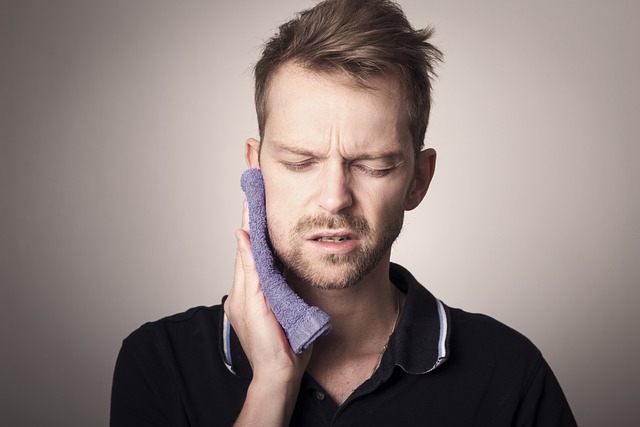


Survey covering 163 municipalities showed that toothache, bleeding and periodontal disease affected 50.57% of respondents, a proportion considered high by specialists (photo: Sam Williams/Pixabay)
Published on 05/13/2021
By Maria Fernanda Ziegler | Agência FAPESP – Oral health problems, especially caries, toothache, gingivitis and periodontitis, are a cause of discomfort for 50.57% of adults aged 35-44 in São Paulo State, Southeast Brazil.
The proportion, considered high by specialists, is among the findings of an epidemiological survey conducted in 2015 by the São Paulo State Department of Health in 163 municipalities with support from FAPESP.
Entitled Pesquisa Estadual de Saúde Bucal (SB SP 2015), the survey examined 17,560 people, among whom 6,051 were aged between 35 and 44. A dentist performed an oral examination of each participant, and all participants answered a questionnaire on the impact of oral health on their everyday lives.
Researchers affiliated with the University of Campinas’s Piracicaba Dental School (FOP-UNICAMP) and the University of São Paulo’s Dental School (FO-USP) used the data to look for correlations between several socioeconomic and clinical variables and a quality-of-life index known as “oral impact on daily performance” (OIDP). The results, published in an article in the journal PLOS ONE, identified oral health deficiencies in the sample population and indicated the need for new public policy measures.
“The results are worrying. The impact of poor oral health on daily activities is significant in São Paulo State, which has a larger public oral healthcare service and a larger GDP than other Brazilian states. These are perfectly treatable problems that affect half of the people in this age group,” said Antônio Carlos Pereira, a professor at FOP-UNICAMP and one of the coordinators of the SB SP 2015 survey.
A nationwide survey conducted in Brazil in 2010 found negative OIDP in 48.1% of adults aged 35-44. Even higher proportions have been found for India, with negative OIDP in 50.0% of subjects aged 21-24 and Tanzania, with negative OIDP in 51% of subjects with a mean age of 26.4.
In a similar survey performed in England, Wales and Northern Ireland, only 16% of adults aged 21 and over reported negative OIDP. In Norway, a national survey detected negative OIDP in 19.0% of subjects aged 25-44 and 17.9% of those aged 45-66.
Health inequities
The main causes of discomfort reported by respondents to the latest Brazilian survey described in the PLOS ONE article were relatively simple problems such as toothache, bleeding, and periodontal pockets – spaces around the teeth below the gum line that have become infected. At an advanced stage, pockets can lead to abscesses, pain and embarrassment. Bacteria accumulating in pockets cause loss of bone and gum tissue attachment and may eventually erode the structures that hold teeth in place.
“Toothache in adults contributes to workplace absenteeism and can affect daily activities, economic production and job performance,” said Giovana Renata Gouvêa, a researcher at FOP-UNICAMP, a faculty member of Fundação Hermínio Ometto (FHO/UNIARARAS) and lead author of the article.
Cross-tabulation of the OIDP data with the socioeconomic data of the respondents pointed to the groups that are most vulnerable to oral health problems. The findings showed that women of color with a household income equivalent to the minimum wage or less and up to eight years of schooling were most likely to report negative OIDP.
According to Gouvêa, the survey highlights evident health inequities. “Based on evidence presented in the scientific literature, we can say that lower levels of income and schooling are associated with poor oral health. Moreover, longitudinal studies have shown that education plays an important role in the prevention of health problems, while income has more influence on their course or progression,” she said.
Quality-of-life indicator
In the PLOS ONE article, the researchers stress the impact of oral disease on quality of life. “Tooth pain and tooth loss cause restrictions on function, lead to discomfort and hinder food consumption, while periodontal changes such as bleeding and dental calculus impact appearance, self-esteem and even social relationships,” they wrote.
The OIDP questionnaire was designed to investigate the impact of oral heath on physical, psychological and social aspects of daily life. It included such questions as “Have you had difficulty eating because of your teeth?” and “Have you ever felt toothache on drinking cold or hot liquids?” Subjects were also asked whether they experienced discomfort, nervousness or irritation when they cleaned their teeth and whether they had avoided going out, having fun, going to parties or going on pleasure outings because of their teeth.
“The survey went beyond the question of teeth and covered the entire quality-of-life context, including physical, psychological and social aspects, identifying not just pain or ailments but also embarrassment and emotional upsets,” Gouvêa said.
“Knowledge of oral health conditions in the adult population and their impact on the performance of daily activities is essential to underpin the implementation of public services and policies. It’s particularly important to the study of health inequities because the aspects considered in this evaluation aren’t merely biological and measurable but also have to do with the individual’s self-image.”
The article “Variables associated with the oral impact on daily performance of adults in the state of São Paulo: A population-based study” (doi: 10.1371/journal.pone.0203777) by Giovana Renata Gouvêa, Jaqueline Vilela Bulgareli, Luciene Luvizotto David, Gláucia Maria Bovi Ambrosano, Karine Laura Cortellazzi, Luciane Miranda Guerra, Antonio Carlos Frias, Marcelo de Castro Meneghim and Antonio Carlos Pereira can be read at journals.plos.org/plosone/article?id=10.1371/journal.pone.0203777.
Source: https://agencia.fapesp.br/30260